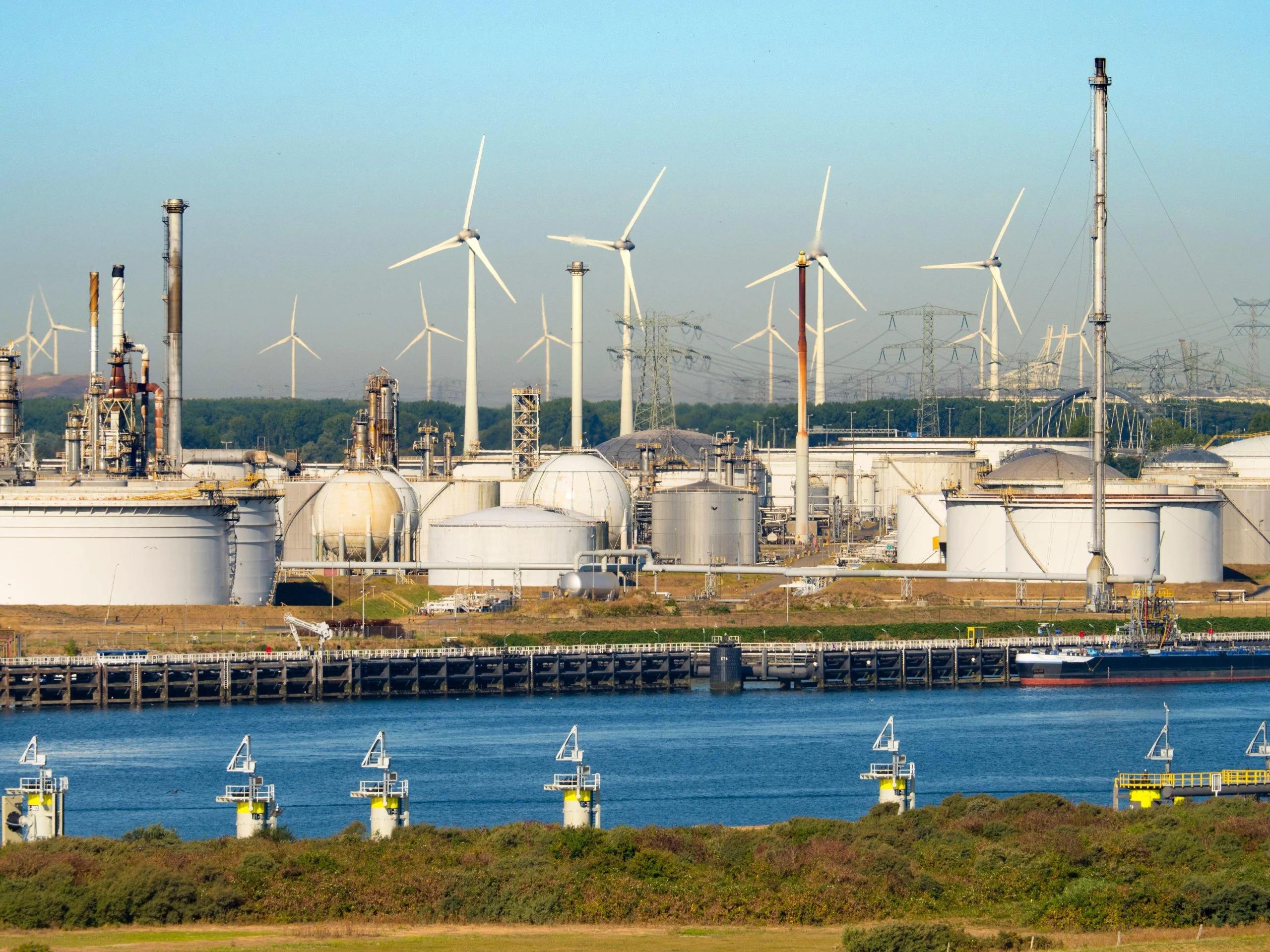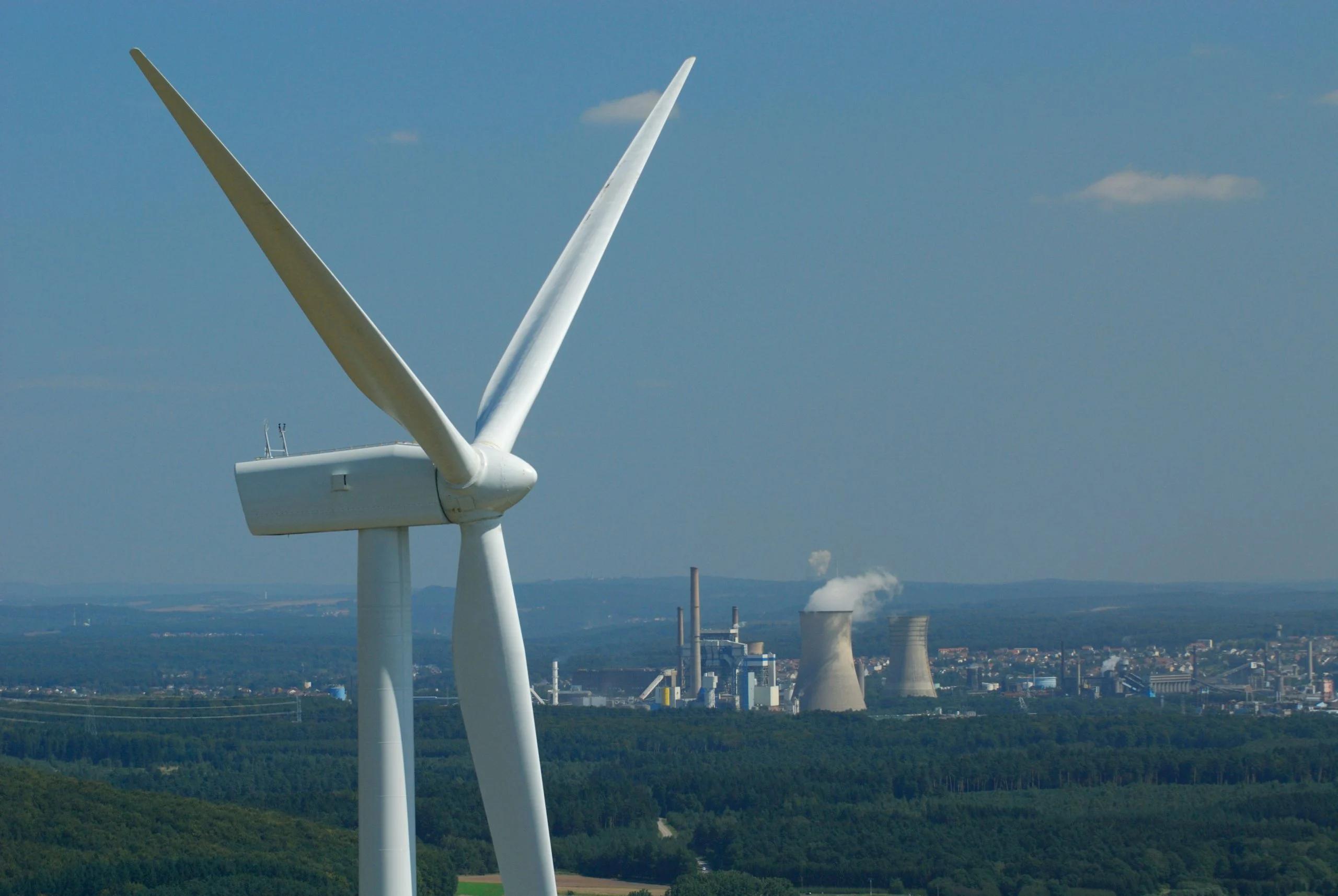Chapter 2:
Country and region analysis
Neste capítulo
Mergulho profundo nos cinco maiores emissores do setor de energia
A demanda de eletricidade caiu em algumas economias de alta renda (a UE, o Japão e os EUA), que impulsionam suas emissões e contribuindo para as emissões flattantes (o Japão e os EUA), os EUA. Na Índia, a demanda cresceu moderadamente, levando a um crescimento mais lento da geração de carvão em comparação com o mesmo período do ano passado, o que, por sua vez, diminuiu a velocidade das emissões. A demanda também aumentou na China, onde os problemas com o hidrelétrico exigiam maior consumo de carvão e levou ao aumento das emissões. Contabilizando 31% da geração global e continuará sendo responsável pela maioria do crescimento futuro da demanda global. Portanto, o que acontece no setor de eletricidade do país é extremamente importante para a transição global de eletricidade.
2.1
China
China accounted for two-thirds of global growth in wind and solar generation in the first half of 2023, but poor hydro conditions led to an increase in coal power
China is the world’s largest power producer, accounting for 31% of global generation, and it will continue to be responsible for most future global demand growth. Hence, what happens in the country’s electricity sector is critically important to the global electricity transition.
Na primeira metade de 2023, a China representou 67% do crescimento global na geração eólica e solar, mas a má produção hidrelétrica significava que a China também viu um aumento significativo na geração do carvão. período do ano passado. No entanto, o crescimento do país este ano está alinhado com seu crescimento médio na última década (2012-2022) de 5,9%. Como de costume, o crescimento da demanda da China no primeiro semestre deste ano foi significativamente maior que a média global de 0,4%. ar condicionado naquele período. Apesar dos aumentos temporários relacionados ao clima, o crescimento da demanda de 6% este ano até agora está alinhado com o Conselho de Eletricidade da China
China’s demand increased above the world average
China’s electricity demand grew 6% (+246 TWh) in the first half of 2023, a larger increase than the 2.4% growth seen in the same period last year. However, the country’s growth this year is in line with its average growth over the last decade (2012-2022) of 5.9%. As usual, China’s demand growth in the first half of this year was significantly higher than the global average of 0.4%.
Demand growth in China was mainly caused by economic growth, which is forecast to be about twice the world’s average this year, as well as heat waves over May and June resulting in increased demand from air conditioning in that period. Despite the temporary weather-related increases, the demand growth of 6% this year so far has been in line with the China Electricity Council previsão para 2023 de 6%. 67% do aumento global da geração eólica e solar na primeira metade de 2023.
China remains a global leader in new wind and solar generation
China continues to be the global leader in the build up of wind and solar, accounting for 67% of the global increase in wind and solar generation in the first half of 2023.
A geração eólica da China aumentou 26% (+99 TWH) na primeira metade de 2023, em comparação com o mesmo período do ano passado, que é quase três vezes mais rápido que a média global. O rápido crescimento da China na geração eólica está superando o crescimento na UE, Japão e EUA, onde a geração cresceu moderadamente ou viu pequenas quedas. Isso significava que 91% das adições globais na geração eólica em H1-2023 vieram da China. Ao mesmo tempo, a geração solar da China cresceu 21% (+44 TWH), maior que o crescimento solar global de 16%. Na primeira metade de 2023, a China forneceu 43% do aumento global na geração solar. Combinados, as duas fontes cresceram 24% (+144 TWH) na China, quase o dobro do crescimento médio global de 12%. Em H1-2020, 369 TWH foram produzidos a partir de vento e energia solar. Em H1-2023, isso aumentou para 738 TWH. Consequentemente, a participação da geração eólica e solar também aumentou substancialmente, de 11% em H1-2020 para 17% da eletricidade da China nos primeiros seis meses de 2023. É o primeiro período de seis meses em que a China gerou mais de uma sexta e o queda e a energia do vento e do solar. As adições solares cobriram 58% (144 TWH) do aumento da demanda de eletricidade da China. Pequenos aumentos em outra geração limpa, como nuclear e bioenergia, contribuíram com menos de 10% (18 TWH) do aumento da demanda. Novos projetos hidrelétricos também foram concluídos, mas as secas viram a saída da energia hidrelétrica cair 22% (-129 TWH). Ano a ano, a geração de carvão da China teria aumentado muito mais lentamente, pois não teria que compensar o grande déficit hidrelétrico de 129 TWH. Com o déficit hidrelétrico, a geração de carvão da China aumentou 203 TWH (+8%) no primeiro semestre de 2023, em comparação com o mesmo período do ano passado. Sem esse déficit, teria aumentado em 74 TWH (+2,9%). Isso seria suficiente para transformar um aumento na geração global de carvão de 47 TWH em uma queda de 82 TWH. As secas graves começaram a ter um efeito negativo na geração hidrelétrica da China no segundo semestre de 2022 e continuou na primeira metade de 2023. As condições médias ou boas hidro na segunda metade de 2023 poderiam, portanto, ver um retorno para a produção significativamente acima dos níveis do ano anterior. 7,9% (+173 milhões de toneladas de CO2) nos primeiros seis meses de 2023. Em comparação, as emissões do setor de energia global aumentaram muito mais lentamente (+0,2%). A maior parte do aumento da China ocorreu de março a junho. Em fevereiro, as emissões do setor de energia da China estavam 1,4% abaixo dos níveis observados no primeiro semestre de 2022. No entanto, a partir de março, as más condições hidrelétricas levaram a um aumento na geração de carvão.
Generation from wind and solar in China has doubled in just three years. In H1-2020, 369 TWh were produced from wind and solar. In H1-2023, this had increased to 738 TWh. Consequently the share of wind and solar generation also increased substantially, from 11% in H1-2020 to 17% of China’s electricity in the first six months of 2023. It is the first six-month period in which China has generated more than a sixth of its electricity from wind and solar.
China’s coal generation increased due to hydro fall and demand increase
Wind and solar additions covered 58% (144 TWh) of the increase in China’s electricity demand. Small increases in other clean generation, such as nuclear and bioenergy, contributed less than 10% (18 TWh) of the rise in demand. New hydropower projects were also completed, but droughts saw output from hydropower fall by 22% (-129 TWh).
This hydro deficit–alongside the rise in demand that was not met by clean power generation–created a large shortfall which was filled by coal generation, which increased 8% (+203 TWh) to a new record high.
Had hydro generation been unchanged year-on-year, China’s coal generation would have increased far more slowly, as it would not have had to make up for the large hydro deficit of 129 TWh. With the hydro deficit, China’s coal generation increased by 203 TWh (+8%) in the first half of 2023, compared to the same period last year. Without this deficit it would have risen by 74 TWh (+2.9%). This would have been enough to turn a rise in global coal generation of 47 TWh into a fall of 82 TWh.
It is still possible for China’s hydro output in 2023 to recover. Severe droughts started to have a negative effect on China’s hydro generation in the second half of 2022, and continued into the first half of 2023. Average or good hydro conditions in the second half of 2023 could therefore see a return to output significantly above the previous year’s levels.
China’s power sector emissions rise
Driven by the increase in coal generation, emissions from China’s power sector jumped 7.9% (+173 million tonnes of CO2) in the first six months of 2023. In comparison, global power sector emissions rose much more slowly (+0.2%). Most of the increase in China occurred from March to June. As of February, China’s power sector emissions had been 1.4% below levels seen in the first half of 2022. However, from March onwards, poor hydro conditions led to an increase in coal generation.
Se aumentos adicionais nas emissões do setor de energia da China podem ser evitadas depende de vários fatores. Se o vento e a energia solar continuarem aumentando em suas taxas de crescimento atuais, suas adições por si só poderão ser suficientes para atender a todo o aumento da demanda de eletricidade da China. Em seguida, dependerá de outras fontes limpas, como geração nuclear e condições hidrelétricas voláteis, bem como da taxa de crescimento econômico e da demanda, quando vemos a primeira emissão estrutural cai no setor de energia da China. Crescimento global na geração solar em H1-2023, apesar das taxas de crescimento nacional (+13%) inferiores à média global (+16%). Ao mesmo tempo, a geração de vento nos EUA caiu 16%, devido às piores condições do vento do que no ano anterior. Como resultado da queda da demanda e da comutação de carvão para gás, as emissões do setor de energia dos EUA caíram 64 milhões de toneladas, o que ajudou a garantir que as emissões do setor de energia global platadas em vez de aumentar. Isso foi resultado de uma mudança para a geração de gás, que aumentou 8% (+61 TWH), além de quedas significativas na demanda de eletricidade de 3,4% (-72 TWH) após dois anos de crescimento acima da demanda. A redução na demanda nos EUA foi causada por ambos
2.2
United States
United States responsible for 13% of global solar growth in the first half of 2023
The US contributed 13% of global growth in solar generation in H1-2023, despite national growth rates (+13%) lower than the global average (+16%). At the same time, wind generation in the US fell 16%, due to worse wind conditions than in the previous year. As a result of demand falling and coal-to-gas switching, US power sector emissions fell by 64 million tonnes, which helped ensure that global power sector emissions plateaued rather than increased.
Coal-to-gas switching pushed US coal generation down
US coal generation fell by 27% (-112 TWh) in the first half of 2023 compared to the same period last year. This was a result of a switch to gas generation, which increased by 8% (+61 TWh), as well as significant falls in electricity demand of 3.4% (-72 TWh) after two years of above average demand growth. The reduction in demand in the US was caused by both mais lento do que o esperado crescimento econômico, bem como Temperaturas mais brandas in Q1 of 2023. Both economic growth and electricity demand are expected to rise again in 2024.
US renewables stall as wind and hydro dip
A geração de eletricidade renovável nos EUA caiu 3,7% (-19 TWH) na primeira metade de 2023, em comparação com um aumento global de 10%. A geração eólica dos EUA caiu 5,6% (-13 TWH), em contraste com um aumento global de 10%. A geração hidrelétrica dos EUA caiu 12% (-17 TWH), semelhante ao declínio global de 12%. Outros renováveis e bioenergia viram apenas pequenas mudanças. A geração solar dos EUA cresceu 13% (+13 TWH), mas permaneceu abaixo da tendência global (+16%). Comparado ao H1-2017, a geração Hydro H1-2023 caiu 23%. A geração do vento em H1-2023 ainda aumentou 18% em comparação com dois anos antes em H1-2020. permanecer nos níveis atuais ou melhorar. A queda nas emissões dos EUA é equivalente a 1,1% das emissões do setor de energia global e contribuiu para o platô de emissões do setor global, com um aumento de apenas 0,2% (12 milhões de toneladas de CO2) na primeira metade de 2023.
This year’s fall in US hydro generation follows multiple years of hydro decline or stagnation since the peak in H1-2017, with the exception of H1-2021. Compared to H1-2017, hydro generation H1-2023 was down 23%.
The reduction in US wind generation of 5.6% is surprising given the 6% increase in wind capacity in the 12 months to June 2023. However, good wind conditions in H1-2022 caused wind generation to grow by 25%. Wind generation in H1-2023 was still up 18% compared to two years prior in H1-2020.
In addition to the 6% increase in wind capacity, the EIA reported a staggering 25% increase in US solar capacity in the 12 months leading up to June 2023. Solar and wind generation look poised to increase substantially, depressing coal generation further if hydro conditions remain at current levels or improve.
Fall in US power sector emissions due to lower demand and coal to gas switch
The substantial fall in coal generation caused US power sector emissions in H1-2023 to fall 8.6% (-64 million tonnes of CO2). The fall in US emissions is equivalent to 1.1% of global power sector emissions and contributed to global sector emissions plateauing with an increase of just 0.2% (12 million tonnes of CO2) in the first half of 2023.
Devido às contínuas adições de renováveis, o setor de energia emissões. Durante o ano inteiro de 2022, as emissões do setor de energia ficaram 17% abaixo do nível 10 anos antes em 2013. No entanto, as quedas no H1-2023, embora significativas, ainda são menores do que as quedas anteriores observadas no ano pandemico de H1-2020 ou H1-2016 quando o consumo de carvão diminuiu à medida que o gás e o petróleo aumentavam. Para que os EUA continuem com declínios significativos de emissões, ele não pode confiar na redução da demanda para impulsionar as quedas na geração fóssil. Em vez disso, é necessária uma rápida construção de vento e energia solar para atender à nova demanda de eletricidade e deixar a geração fóssil fora da mistura. A UE contribuiu com 11% do crescimento global na geração eólica e solar em H1-2023, apesar de suas taxas de crescimento serem inferiores à média global. Como resultado da queda da demanda e do aumento das renováveis, a geração de combustíveis fósseis caiu dramaticamente. Consequentemente, as emissões do setor de energia da UE caíram 59 milhões de toneladas (-17%), o que ajudou a garantir que as emissões do setor de energia global tenham placas em vez de aumentar.
2.3
European Union
Decline in EU fossil generation contributes to plateau of global power sector emissions
EU electricity demand continued to fall in the first half of 2023, slowing global demand growth. The EU contributed 11% of global growth in wind and solar generation in H1-2023, despite the fact that its growth rates were lower than the global average. As a result of demand falling and renewables increasing, fossil fuel generation fell dramatically. Consequently, the EU’s power sector emissions fell by 59 million tonnes (-17%), which helped ensure that global power sector emissions plateaued rather than increased.
2.4
India
2.5
Japan
Conteúdo relacionado



